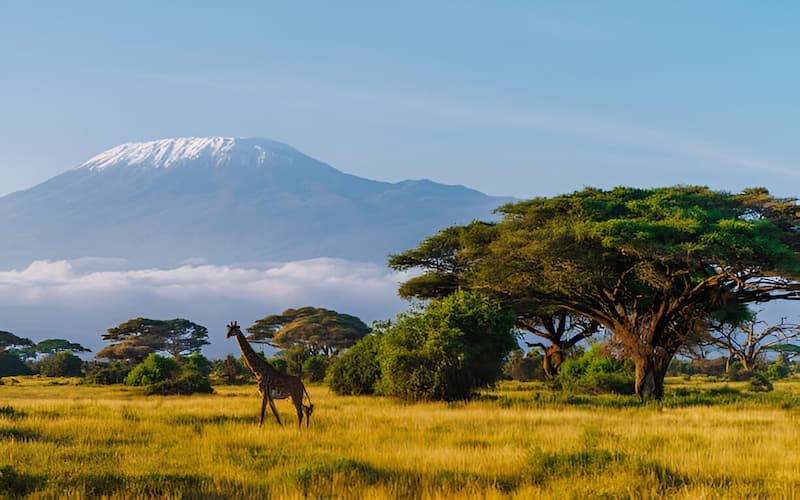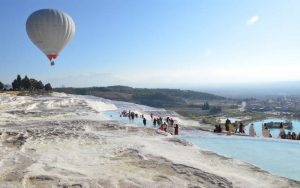Best Safari Photography Tips for Beginners

Safari is the dream of many people, and the presence of the camera shots in the process will make the journey memorable. Be it the golden hour light on the mane of a lion or a herd of elephants heading gracefully towards the plains, with the best safari photography tips the snapshots that you take can become some of the best memories that you will have. As a beginner, it is important to know how to deal with wildlife, natural light and the settings of your camera to produce beautiful pictures which convey a story. Professional looking wildlife photos can be made with a little bit of guidance and with the excitement of the safari adventure one can enjoy it.
In case you are about the next African adventure you may Book South Africa Tour Packages from Dubai in Go Kite Travel and you are guaranteed of the best itinerary to get the amazing wildlife shots without missing a beat.
Essential Tips to Capture Stunning Wildlife Moments on Your First Safari
1. Understand Your Camera and Gear
You should get used to your camera before you go into the wild. Regardless of whether you have a DSLR, a mirrorless camera or even a high-quality smartphone, it is important to know how to adjust the ISO, the shutter speed and aperture. In the case of wildlife photography, high shutter speed is commonly required in order to keep the moving wildlife in focus. There is also one more tip: buy a good telephoto lens, should you have the money, it will enable you to capture wildlife without interfering with their natural habits.
2. Focus on Lighting
The safari pictures can be or can be broken by natural light. The golden hours, immediately after the sunrise and just before the sunset, are soft and warm light and they add depth to colors of the landscape and wildlife. Midday light is also a very harsh one and forms great shadows, however, it is also possible to utilize it creatively to achieve dramatic effects. One of the most effective best safari photography tips, which beginners should learn, is how to use light to your advantage so as to take attractive photos.
3. Be Patient and Observant
Wildlife photography is a virtue of patience. Animals are erratic and the ideal shot may require hours to come by. Their actions are predictable as you watch them, such as a lioness who is about to pounce or the birds flying. Slow, silent movements also ensure that you and your camera remain undetected and this raises the likelihood of getting close up shots of wildlife. Such forbearance is not only making your shots better, but it enhances your safari experience.
4. Composition is Key
It is not only capturing wildlife beautifully through sharp images but also composition. Apply such techniques as the rule of thirds, leading lines, and framing to make balanced and interesting photographs. Add some parts of the surrounding, e.g. trees, rivers or mountains, to make it more contextual and three dimensional. A properly balanced photograph is a story and the audience gets the impression that they are in the wild together with you.
5. Shoot in Burst Mode
Wild life does not wait long and thus when you are taking a picture of a fast moving subject, you find yourself in burst mode and get a series of pictures. It is particularly convenient when the photographer is going to shoot a flying bird, a running animal, or a playful cub. The best shot in a sequence can later be chosen and the likelihood of an ideal picture being made without tension is enhanced.
6. Mind Your Background
A distracting background would spoil an otherwise beautiful shot. Search in the clean and uncluttered backgrounds that stand out your subject. A change in perspective or angle can at times make the difference in your photo. It is one of the best safari photography tips, which is simple but very effective, and many people forget about it even at the very beginning of their career.
7. Capture the Action and the Emotion
Wild life photography is not only about motionless portraits but motion and emotion. The movement of the elephant spraying water, a lioness sucking her cubs or a flock of birds flying off brings life to your photographs. Find these special moments that narrate a story and stir the emotions of any person looking at your photos.
8. Respect Wildlife and Safety Rules
Although it is tempting to get close-ups, they are second to safety and ethics. Be sure to keep a safe distance always, do not make loud noises nor abrupt movements and be guided by your guide. The responsible photography will guarantee that the animals are not stressed and that the natural beauty will remain intact so that future visitors will enjoy it.
9. Practice Makes Perfect
Despite all the tips, practice is the answer to improvement. Be creative with settings, angles and composition. Look through your shots very often and come to know each time you go out. With time, you will gain confidence and skill and you will realize that you have improved a lot in your safari photography.
10. Plan Your Safari Wisely
The selection of a safari destination, season of the year, and tour package can go a long way in determining your chances of taking photographs. Traveling through reputable travel firms such as Go Kite Travel will enable you to have access to professional guides, the best wildlife viewing areas and a smooth logistics system, therefore, you can enjoy the best shots. It is always best to plan ahead so that you can make the most of the adventure and also out of your photography.
Conclusion
Wildlife photography is an enjoyable process that demands patience, preparation and passion. Adherence to these best safari photography tips will enable inexperienced individuals to come up with beautiful images without experiencing unsafe and unethical safari experiences. Whether it is learning how to use your camera or making the perfect shots and planning a successful tour, every detail will help to make the photographs narrate the story of the wild.
You may also Book South Africa Tour Packages from Dubai with Go Kite Travel, where, besides the professional guidance, you can enjoy an adventure that will be remembered forever, sightseeing the animals. Whether you are in pursuit of dramatic sceneries or close ups of animals, these tips will have your safari photos treasured even after several years.




